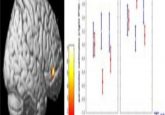The science of sway

Researchers have examined how musicians communicate during a performance by tracking their movements as they play.

Using new mathematical techniques, researchers from McMaster University (ON, Canada) have developed a way to determine how musicians communicate and coordinate with each other during a performance.
The research, recently published in Scientific Reports, could give new insight into how musicians can play as a unit and how they can predict how others will express the music.
“Successfully performing music with a group is a highly complex endeavor,” explained senior author Laurel Trainor. “How do musicians coordinate with each other to perform expressive music that has changes in tempo and dynamics?
“Accomplishing this relies on predicting what your fellow musicians will do next so that you can plan the motor movements so as to express the same emotions in a coordinated way. If you wait to hear what your fellow musicians will do, it is too late”.
Using motion capture equipment, the researchers found that the musicians were more able to predict each other’s movements when playing expressively than if playing without emotion.
“Our work shows we can measure communication of emotion between musicians by analyzing their movements in detail, and that achieving a common emotion expression as a group requires a lot of communication,” commented lead author Andrew Chang.
The technique may have other applications, for example cases of communication such as between non-verbal patients and their caregivers. It could also be used in a romantic setting. “The early results indicate that communication measured in body sway can predict which couples will want to see each other again,” explained Chang.





